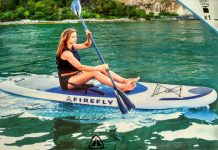Ahoy there! Ready to set sail on an exhilarating adventure? Look no further as we’ve got all the tips you need to embark on your journey as a beginning sailor. Whether you dream of gliding through calm waters or conquering tumultuous seas, our guide will equip you with essential knowledge and skills to navigate the open waters. From understanding the basics of sailboats to mastering the art of trimming the sails, we’ve got you covered. So, hop on board and let’s set sail for a thrilling experience of a lifetime!
Choosing a Sailboat
When it comes to choosing a sailboat, it’s important to consider your sailing goals. Are you looking to sail competitively, or is leisurely cruising more your style? Different sailboats are designed for different purposes, so researching the various types is crucial. Look into the differences between cruising sailboats, racing sailboats, and daysailers. Speaking to experienced sailors can also provide valuable insights and recommendations. Boat shows are a great opportunity to view different sailboats up close and talk to experts in the sailing community. Lastly, consider your budget and maintenance requirements. Owning and maintaining a sailboat can be a significant financial commitment, so it’s essential to have a clear understanding of your budget and the ongoing maintenance costs associated with owning a sailboat.
Learning the Basics
Enrolling in a sailing course is an excellent first step in learning the basics of sailing. These courses offer hands-on experience and teach fundamental skills ranging from boat handling to navigation. Understanding the different parts of a sailboat is crucial for anyone looking to learn how to sail. From the hull to the rigging, knowing the components of a sailboat will help you navigate and maintain your vessel. Learning sailing terminology and basic knots is also essential. Knowing the proper names for different parts of the boat and being able to tie essential knots will ensure smooth sailing and communication on the water. Finally, practice maneuvering and controlling the sailboat under various conditions. Getting comfortable with the feel of the boat and understanding how it responds to different wind and water conditions is key to becoming a proficient sailor.
Understanding Wind and Weather
Educating yourself about wind patterns is vital for successful sailing. Wind plays a significant role in maneuvering and controlling a sailboat. Learn about prevailing winds in your area and understand how they can affect your sailing experience. Additionally, learning how to read weather forecasts is crucial for planning safe and enjoyable sailing trips. Pay attention to wind speed and direction, as well as any significant weather systems or potential storms. Understanding the impact of wind on sailing maneuvers will help you optimize your sail trim and make the most of the wind’s power. Lastly, knowing how to prepare for different weather conditions will ensure your safety and comfort while sailing. Anticipating changing weather patterns and having the necessary gear and provisions onboard will make your sailing adventures more enjoyable.
Safety Measures
Prioritizing safety while sailing is of utmost importance. Wearing proper safety gear, such as life jackets, is non-negotiable. Accidents can happen at sea, so it’s important to know how to handle emergencies. Consider taking a marine safety course to learn essential skills like first aid, basic navigation, and how to use emergency equipment. Familiarize yourself with navigation rules to ensure you’re following the laws and regulations of the sea. Lastly, always stay alert and aware of your surroundings. Keep a vigilant eye on other vessels, potential hazards, and changing weather conditions to minimize risk while sailing.
Preparing for a Sailing Trip
Preparing for a sailing trip involves several important steps. Creating a checklist for essential supplies will help ensure that you have everything you need for a safe and comfortable journey. Items to consider include food, water, safety equipment, navigation tools, and spare parts for your sailboat. Before setting sail, thoroughly check the condition of your sailboat and equipment. Inspect the hull, rigging, and sails for any signs of damage or wear. Perform necessary maintenance or repairs to ensure your sailboat is in optimal condition. Planning your route and anticipating potential hazards is crucial for a successful trip. Study navigational charts and research any known dangers or challenging areas along your route. Lastly, it’s essential to inform someone on land about your sailing plans. Provide them with your itinerary and estimated time of return so that someone is aware of your whereabouts in case of an emergency.
Navigation and Seamanship
Learning how to navigate and understand seamanship is a fundamental skill for any sailor. Familiarize yourself with nautical charts and learn how to use navigation tools such as compasses and GPS systems. Understanding buoyage systems and navigation aids will help you navigate safely and avoid hazards. Practice navigation techniques using both traditional methods and modern technology to build confidence and proficiency. Additionally, mastering basic seamanship skills is essential for smooth sailing. This includes understanding right of way rules, practicing safe mooring and anchoring, and being able to perform basic boat maintenance tasks.
Sailing Etiquette
Respecting other sailors’ right of way is a crucial aspect of sailing etiquette. Understanding and following the rules of the road will ensure a safe and harmonious sailing experience. Avoid creating excessive wake and pollution by being mindful of your speed and minimizing your environmental impact. Additionally, familiarize yourself with the local boating regulations and laws in the areas where you plan to sail. Following these regulations not only ensures your safety but also demonstrates good citizenship on the water. Lastly, practice good communication and cooperation with other sailors. Clear and polite communication helps avoid misunderstandings and encourages a positive atmosphere on the water.
Dealing with Common Challenges
Sailing, like any sport or activity, comes with its fair share of challenges. Overcoming motion sickness is a common obstacle for many new sailors. Gradually build up your tolerance to the motion of the boat and consider over-the-counter or natural remedies to combat seasickness. Handling challenging weather conditions is another hurdle that sailors must face. Learning how to adjust your sail plan and make safe decisions when faced with high winds, storms, or rough seas is crucial for a successful voyage. Equip yourself with knowledge on equipment breakdowns and basic maintenance to handle any unexpected situations that may arise. Finally, managing seasickness and fatigue is vital for maintaining a safe and enjoyable sailing experience. Get plenty of rest, stay well-hydrated, and listen to your body’s signals to avoid exhaustion and the associated risks.
Building Experience and Confidence
Building experience and confidence is a continued journey for sailors. Joining a sailing club or community is a fantastic way to meet like-minded individuals and gain valuable experience. These organizations often offer group sailing activities, workshops, and opportunities to learn from experienced sailors. Participating in regattas and races provides a unique opportunity to put your sailing skills to the test and challenge yourself. Chartering sailboats for different sailing experiences allows you to explore new waters and expand your horizons. Finally, seek opportunities to crew on other sailboats. This not only provides a chance to learn from experienced sailors but also allows you to broaden your network and connect with others in the sailing community.
Recommended Resources
There are various resources available to help beginner sailors further their knowledge and skills. Books and guides on sailing techniques offer in-depth information on various topics, from sailing theory to advanced maneuvers. Online forums and communities for sailors provide a platform for asking questions, getting advice, and connecting with fellow sailors around the world. Sailing schools and courses offer structured learning programs for sailors of all skill levels, from beginners to advanced sailors. Sailing magazines and publications provide a wealth of information, including articles on sailing destinations, boat reviews, and practical tips for sailors.
Embarking on a sailing journey is an exciting adventure. By considering your sailing goals, learning the basics, understanding wind and weather, prioritizing safety measures, preparing properly, mastering navigation and seamanship, practicing sailing etiquette, overcoming challenges, building experience and confidence, and utilizing recommended resources, you’ll be well-equipped to set sail, explore the open waters, and enjoy the countless joys that sailing has to offer. Happy sailing!





































